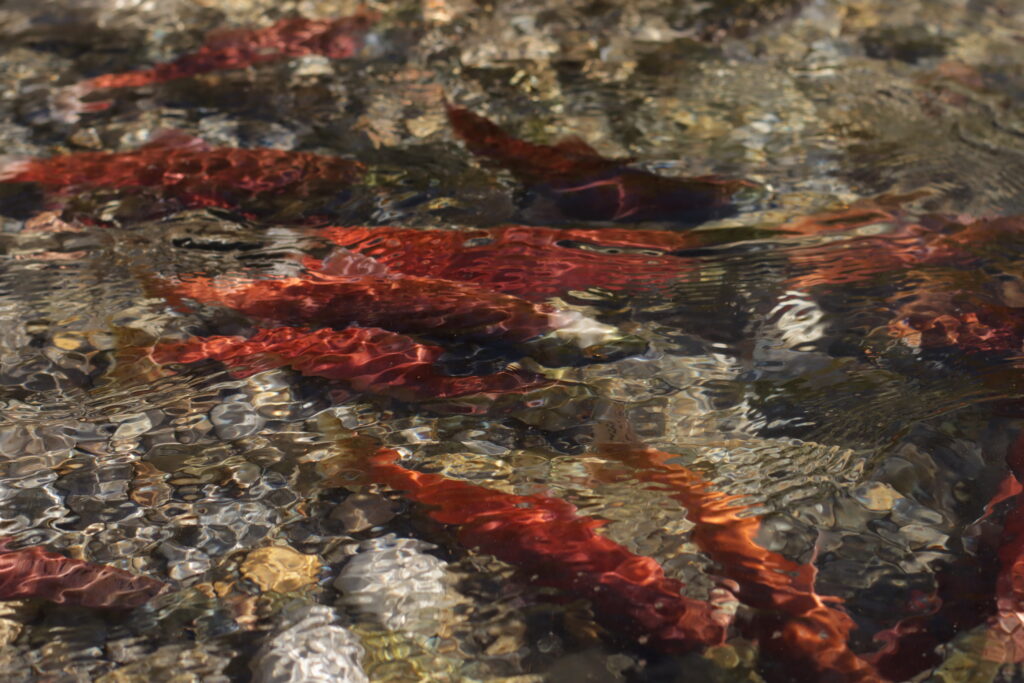Blog updated June 2023.
Kokanee, a land-locked sockeye salmon, have significant cultural and recreational importance in B.C. These shiny silver fish prefer to roam in the deep, clear waters of our largest lakes and reservoirs, and are known for their willingness to aggressively bite flashy lures. Kokanee can provide great year ’round family fishing. With bright pink flesh, kokanee are also acknowledged to be great-tasting … and it seems our province’s wild predators (like large rainbow trout, bull trout, grizzly bears, and eagles) share this opinion.
The number of kokanee stocked into our provincial waters has been slowly increasing during the last decade. In the most recent year, the Freshwater Fisheries Society of BC has stocked over 1.6 million kokanee. That is a lot of fish, and a lot of work behind the scenes. However, it can be very humbling to compare our efforts to the natural productivity of some of our province’s healthy ecosystems. For example, fall assessments on Kootenay Lake by staff of the provincial Fish and Wildlife Branch have shown that an average of about 18 million fry are produced annually.
Declining kokanee populations
Unfortunately, the survival rate of Kootenay Lake kokanee has undergone a dramatic downward shift for the last decade. Typically 500,000 to 1,500,000 spawners are expected to return to streams to deposit their eggs each year, but these numbers have plummeted to an average of 35,000 over the last eight years. This decline has, in turn, had a negative effect upon the highly valued Kootenay Lake fishery, and the health of the broader ecosystem. Gerrard rainbow trout and bull trout are still abundant but are now much smaller and grow slower. Overabundant predators were the main cause of the initial decline, and are still the reason why kokanee can’t recover. Kokanee are trapped in a “predator pit” – an unequal balance between predator and prey that sometimes forms in ecosystems and is difficult to recover from.
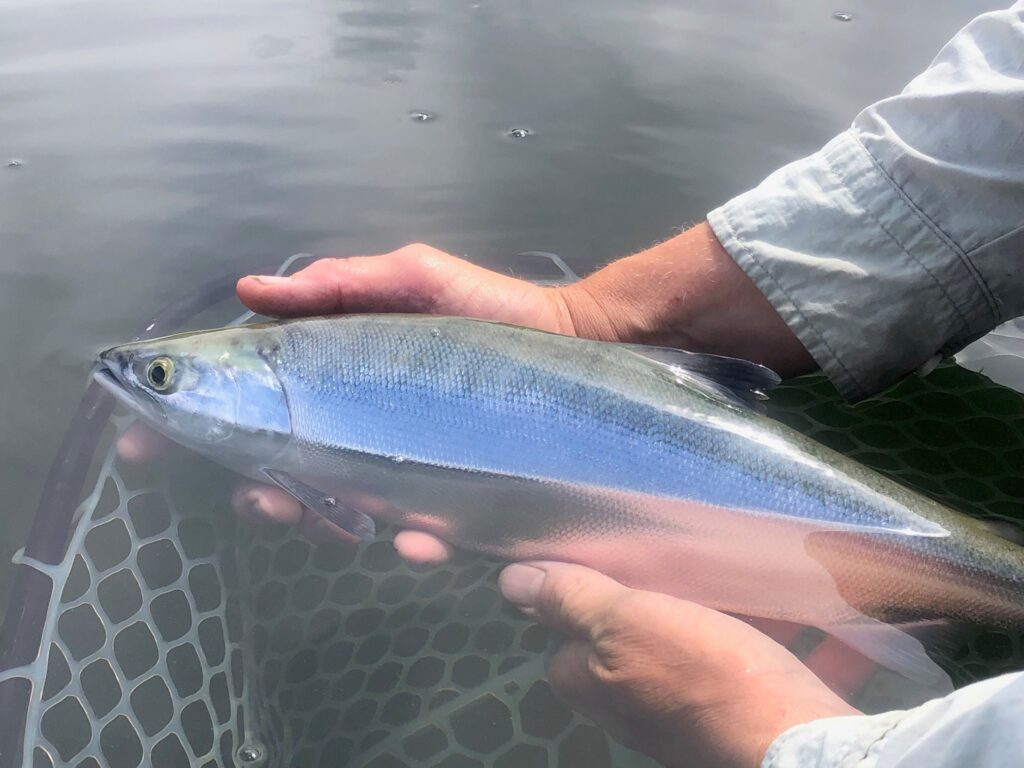
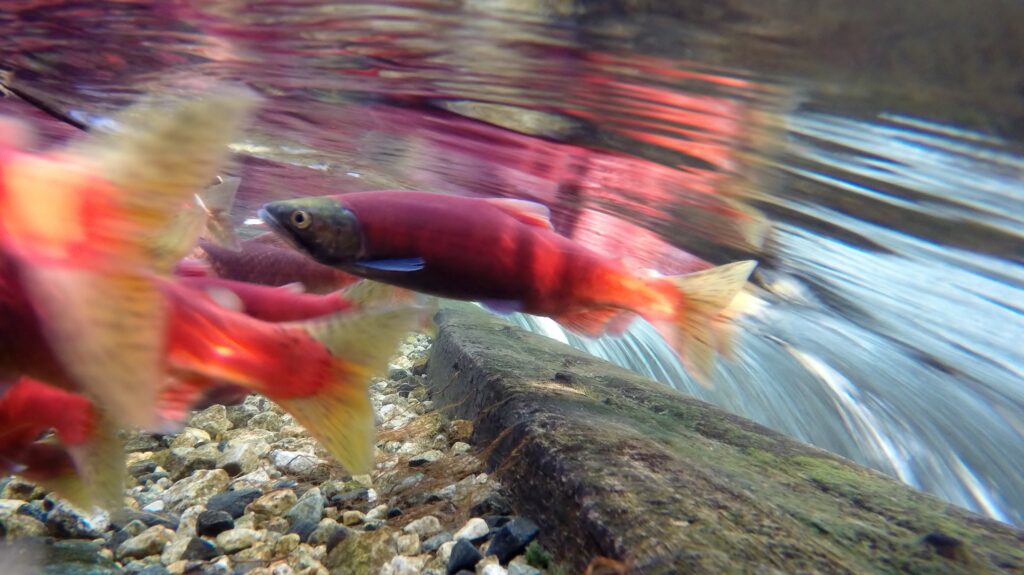
Intervention strategies
Concern from government biologists and stakeholders on the state of Kootenay Lake led to the formation of the Kootenay Lake Fisheries Advisory Team (KLAT). The team recommended that immediate intervention be taken in an attempt to speed recovery of the kokanee population. There are two main strategies to recover kokanee out of the predator pit: increasing supply of kokanee and reducing predator adundance.
1. Increasing the supply of kokanee
Starting in 2015, the KLAT recommended to increase the supply of kokanee by obtaining kokanee eggs from other lakes that had historically been stocked with Kootenay Lake fish. However, the vast size of Kootenay Lake required significant numbers of eggs to have any meaningful impact. In the first year of implementing this strategy, the recovery team set a lofty target of five to seven million eggs – which represented a five- to seven-fold increase in production for the Society, not to mention the eggs that would be needed to maintain recreational fisheries in other lakes already being stocked. Furthermore, since there was no single lake around the province that could supply such a vast amount of eggs, staff would need to get them from numerous spawning tributaries across the province.
Society staff were more than willing to take on this challenge. Their managers immediately began a plan of attack, including changes to hatchery infrastructure to accommodate the increased egg quantities; identification of potential egg sources, their timing, location, and genetic origins (Kootenay Lake origin fish were targeted); and, finally, a complicated shuffling of staff and equipment to coincide with fish timing and locations. Installing a fish spawning fence in flowing water always means a continual battle with nature as debris, leaves, high water-flows, and predators constantly threaten to destroy the work put in. The Society has reliably supported Kootenay Lake recovery since 2015 by providing eggs or fry, and as of 2022, around 24 million have been stocked to support kokanee recovery.
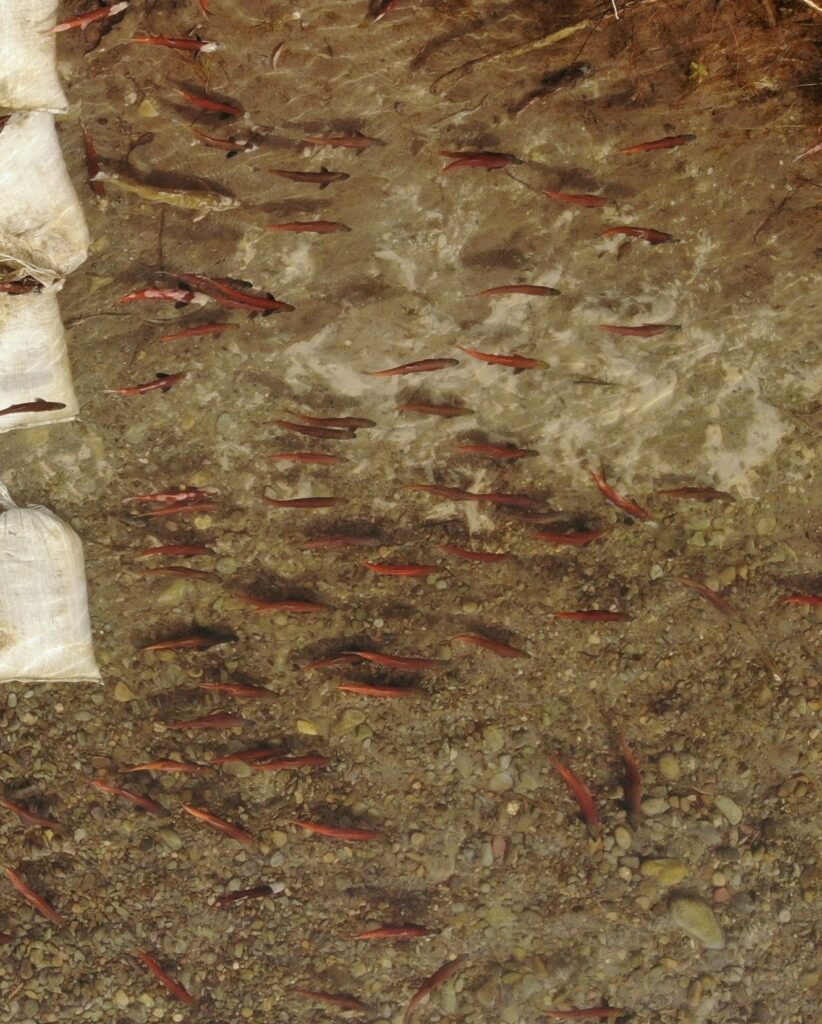
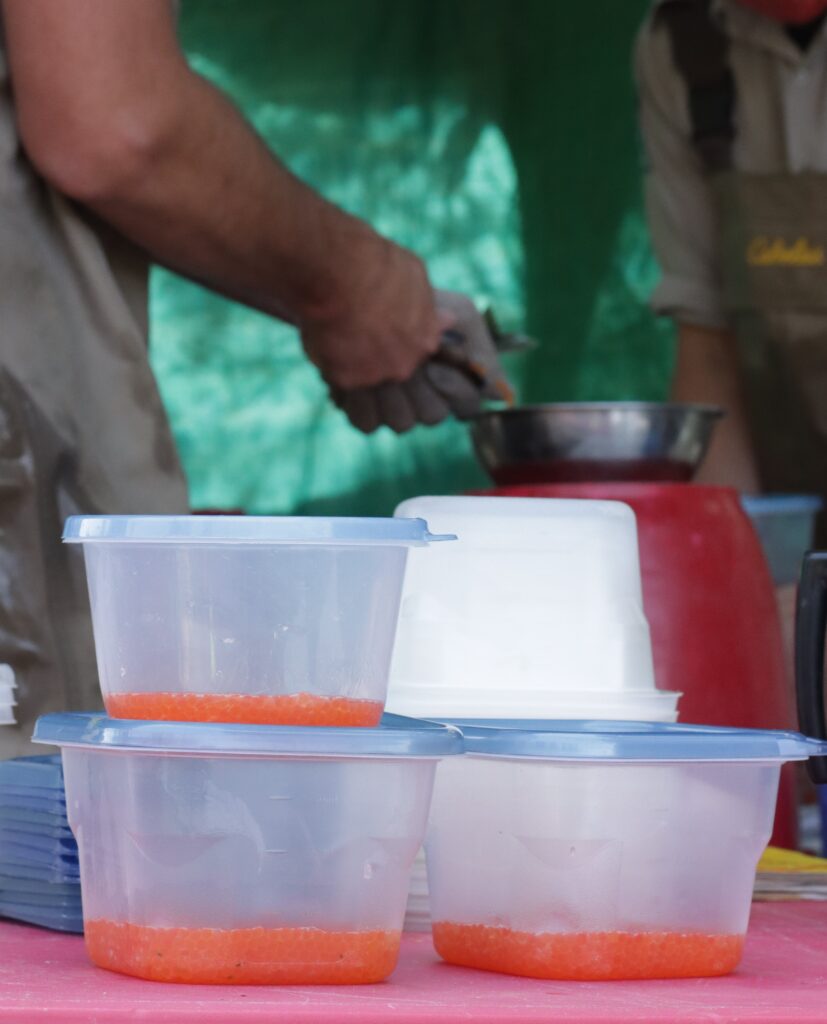
2. Reducing predator numbers
The other strategy to recover kokanee in Kootenay Lake is by reducing predator numbers. Provincial fisheries managers and partners have progressively scaled up predator reduction actions since 2015 through a variety of actions, including liberalizing harvest regulations, netting, and supporting the delivery of the Kootenay Lake Angler Incentive Program. These actions have been effective at removing many thousands of predators annually, and scaled-up efforts are planned for 2023.
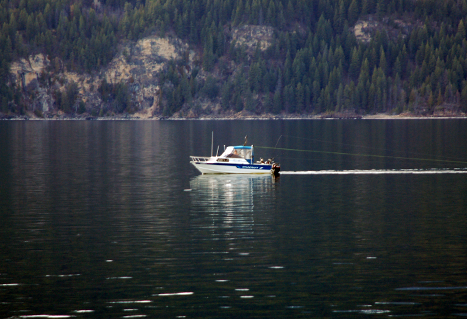
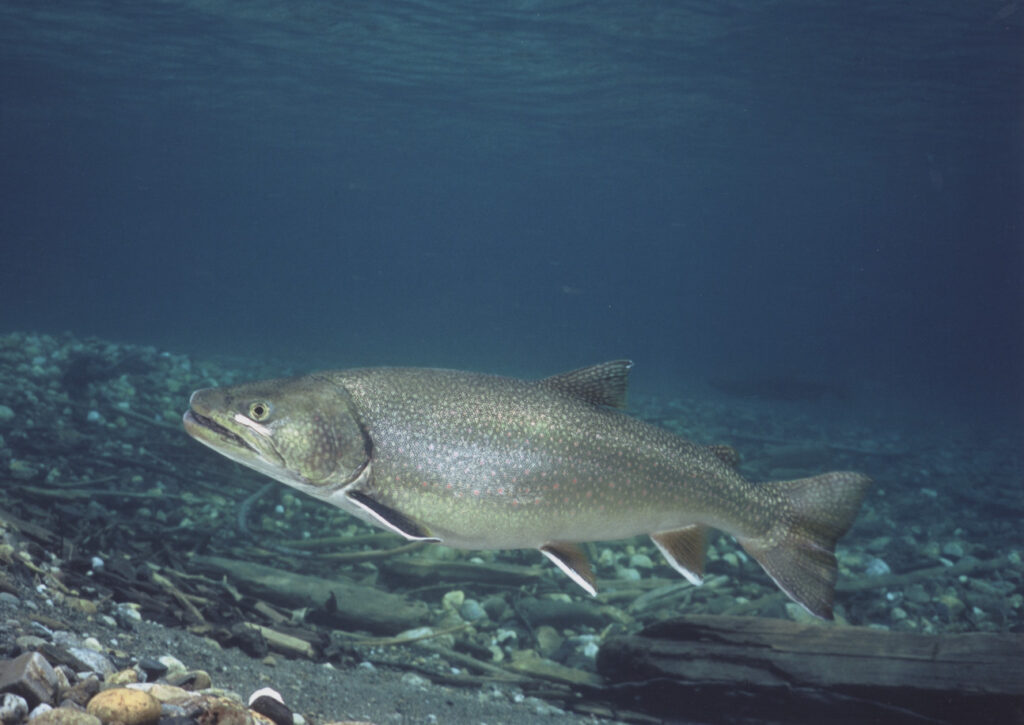
Navigating a way out of the predator pit
Once the balance tips back toward having many more kokanee, they will escape the predator pit and the lake should reset to its natural state. We are not there yet, but the net effect of kokanee stocking and predator reduction has resulted in positive trends for kokanee and the fishery. In every year since 2015, kokanee spawner replacement has been positive – every spawner produces more than one spawner in the next generation. Predators now appear to have fuller stomachs and we are seeing increases of large fish in the fishery, which is a positive sign that we are on our way to recovery.
This blog series has been established as a way to inform freshwater anglers in B.C. about projects, such as this one, that their angling licence dollars support. In 2015, the Freshwater Fisheries Society of BC began receiving 100% (up from 70%) of all freshwater angling licence fees. With this additional funding, the Society committed to broadening the scope of its activities to include joint initiatives with the Provincial Government to support projects that benefit freshwater recreational fishing around B.C.
Author: Paul Askey, Freshwater Fisheries Society of BC. Updates provided in 2023 by Will Warnock, Ministry of Forests.
